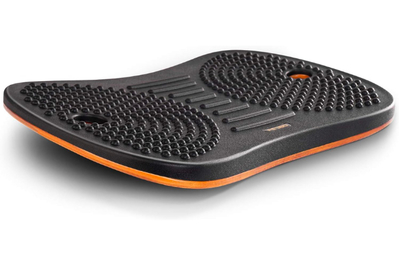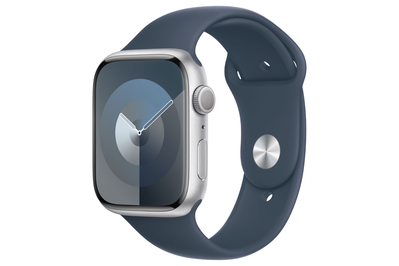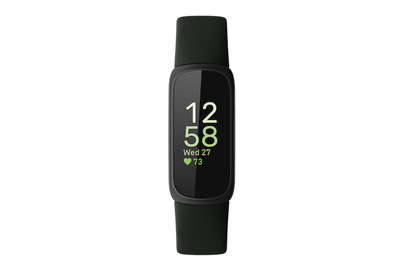
Annemarie Conte is an editor who writes the Ask Wirecutter column and trending-product reviews. She’d love to make you a friendship bracelet.
Welcome to Ask Wirecutter, where deputy editor Annemarie Conte helps you figure out how to make the most of your stuff in real life. If you have a shopping conundrum for our advice columnist, submit it using this form.
Dear Wirecutter,
I have a work-from-home desk job, and I go from daytime office chair to evening couch time to bed with very little movement in between. How can I become less sedentary?
B.C.
Dear B.C.,
It’s easy to fall into a rut, especially when you work a job that requires you to stare at a screen of spreadsheets or documents (and/or have long meetings where you ... stare at a screen) for eight-plus hours a day.
After-work time can feel like a sinkhole of just trying to push through dinner, bedtime routine with kids (if applicable), and zoning out to catch up on Love Island or play Spelling Bee for an hour before you go to bed. Rinse and repeat ad infinitum.
Does that seem bleak? It doesn’t have to be.
“Start small to build up to a habit. Your goal should be to move throughout the day, even if it’s just to check the mail or wobble and stretch at your standing desk,” says senior staff writer Kaitlyn Wells, a work-from-home expert who wrote a Wirecutter article about how to take more breaks during the workday. “New research says that spending most of the workday sitting can actually increase your chance of dying early for any reason by 16%, so it’s worth it to make those micro-habits the norm.”
The Wirecutter staff includes a large distributed workforce of people who have come up with strategies to keep themselves moving while working a desk job. Here’s some of their best advice.
Also great
This balance board makes standing breaks more enjoyable, and its weighted design prevents falls during use. Plus, its rigid massage beads can work out the kinks in the sorest of feet.
Buying Options
Advertisement
SKIP ADVERTISEMENTBuild in stand-up time
Even if you’re at a computer all day, sitting isn’t the only way to work. Consider a standing desk or standing desk converter to allow yourself the option of alternating between sitting and standing. To combat the urge to just sit at your standing desk all day, leave your standing desk in the up position at the end of the day so that when you return to it the next morning, you start the day standing.
“Make standing the default, and you’re more likely to start your day in a positive place,” says senior staff writer Melanie Pinola. “You can change the narrative from ‘I mostly sit at work and stand sometimes’ to ‘I mostly stand and sit sometimes,’ especially if you mostly sit after work.”
If you tend to fidget while standing, consider the Fezibo Balance Board, a pick in our standing desk mat guide. We liked that the board’s side-to-side wobble can engage your core and potentially improve your posture. Note, though, that some testers found that it worsened existing lower-back pain.
Our pick
With an always-on display, two sizes to choose from, and advanced health and fitness features, the Apple Watch Series 9 is great for buyers upgrading from an older Apple Watch.
This easy-to-use tracker is comfortable to wear all day and provides accurate measurements without putting too much clutter on the home screen.
Set up external reminders to stand
You can automate your sit-stand cycle. Add reminders to switch positions with a digital device such as an Apple Watch or a fitness tracker like our top pick, the Fitbit Inspire 3. Both can prompt you to stand up—and then you just need to actually do it. You can also set a standalone timer or one on your phone to go off every 50 minutes or so.
Time-blocking your work can also create a regular cadence of movement. Many Wirecutter staffers like the Pomodoro Technique, which breaks work into 25-minute segments with a five-minute break. When that break comes, it’s your cue to move.
You can also build in reasons to get up. Leave some small thing on your desk that lives in another room, so you have an excuse to stand up and go put it away, says senior staff writer Jackie Reeve.
Or, heck, get a 40-ounce tumbler and commit to drinking more water or buy a box of delicious tea and make a few cups per day. If you have to go to the bathroom, that means you’re getting up and moving.
Relieve a bit of your mental load by going into your calendar right now and scheduling repeating meetings with yourself. When that reminder pops up, strap on your shoes, take a stroll for 20, listen to a podcast to keep your mind off work, and you’ll be back before the next Zoom reminder chimes.
“I schedule breaks that include a three-minute walk up and down the hill I live on. One before work, one at coffee break, one at lunch, one at afternoon snack, and one at the end of work. Now that I’ve built up that routine, I’ve added push-ups to the mix,” says Wirecutter Deals staff writer Michael Cohen.
Our pick
This Bluetooth-enabled treadmill features an easy setup and a smooth ride—but it comes with only a 90-day warranty.
Buying Options
Advertisement
SKIP ADVERTISEMENTMove during meetings
Wirecutter recently spent three months with 30 people testing under-desk treadmills, and we recommend the Goplus 2 in 1 Folding Treadmill, which accommodates people up to 265 pounds. “These are great for fitting movement into your day while simultaneously completing a few work-related tasks,” says guide author Kaitlyn.
Or you can take meetings as a walking phone call. Something like a quick catch-up that doesn’t require you to be directly in front of a screen can easily become an outdoor walk-and-talk.
Keep exercise equipment nearby
If you have space in your home office, keeping some home-fitness gear there can put a little movement within arm’s reach. Your addition to your home-office decor can be big, such as an exercise bike or bike trainer, or small, like a yoga mat, resistance bands, adjustable dumbbells, or even a Hula-Hoop.
Supervising editor Joshua Lyon literally Hula-Hoops between meetings for about 10 minutes two or three times a day, while senior staff writer Kimber Streams stretches or does some Pilates on a yoga mat.
And our colleagues at New York Times Well have a standing seven-minute workout that they recommend, complete with video, which is perfect for squeezing in some movement when you’re transitioning between tasks.
Advertisement
SKIP ADVERTISEMENTGet a dog
No, we’re not seriously suggesting that you get a dog to spend less time at your desk. But we are saying that if you work from home, walking your dog throughout the day is a positive effect of being a pet owner—in addition to all the other considerations one should keep in mind before deciding to get a dog. Studies show that people who have dogs get more physical exercise than people who don’t have dogs, and it makes intuitive sense.
“I have a standing desk that I hardly ever stand at. I have a fancy topographic desk mat that gathers dust behind my office door,” admits supervising editor Ben Keough, who edits Wirecutter’s work-from-home section while working from home. “What actually gets me moving every day is the duty I feel to give my elderly dog her hour-long walk. It’s good for her, and it’s good for me too—not just physically, but mentally.”
This article was edited by Jason Chen.
Meet your guide
Annemarie Conte is a deputy editor at Wirecutter. She has written and edited for multiple local and national magazines throughout her career. You can follow her on Instagram.
Advertisement
SKIP ADVERTISEMENT




